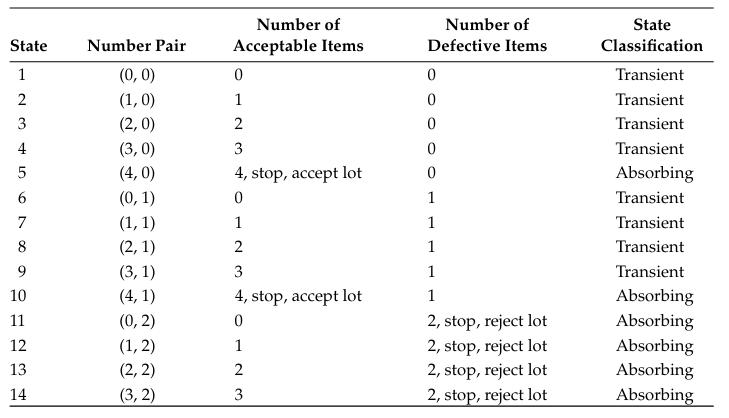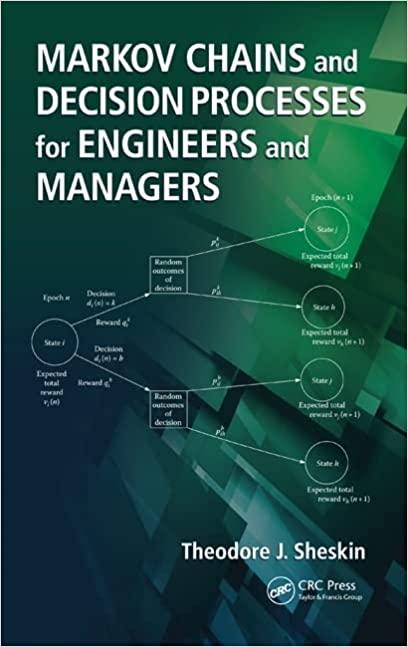Many products are classified as either acceptable or defective. Such products are often shipped in lots, which
Question:
Many products are classified as either acceptable or defective. Such products are often shipped in lots, which may contain a large number of individual items. A purchaser wants assurance that the proportion of defective items in a lot is not excessive. Instead of inspecting each item in a lot, a purchaser may follow an acceptance sampling plan under which a random sample selected from the lot is inspected. An acceptance sampling plan is said to be sequential if, after each item is inspected, one of the following decisions is made: accept a lot, reject it, or inspect another item. Suppose that the proportion of defective items in a lot is denoted by p. Consider the following sequential inspection plan: accept the lot if four acceptable items are found, reject the lot if two defective items are found, or inspect another item if neither four acceptable items nor two defective items have been found. The sequential inspection plan represents an independent trials process in which the condition of the nth item to be inspected is independent of the condition of its predecessors. Hence, the sequential inspection plan can be modeled as a Markov chain. A state is represented by a pair of numbers. The fi rst number in the pair is the number of acceptable items inspected, and the second is the number of defective items inspected. The model is an absorbing Markov chain because when the lot is accepted or rejected, the inspection process stops in an absorbing state. The transient states indicate that the inspection process will continue. The states are indexed and identified in the table below:

Construct the transition probability matrix for this 14-state absorbing Markov chain.
Step by Step Answer:

Markov Chains And Decision Processes For Engineers And Manager
ISBN: 9781420051117
1st Edition
Authors: Theodore J. Sheskin





